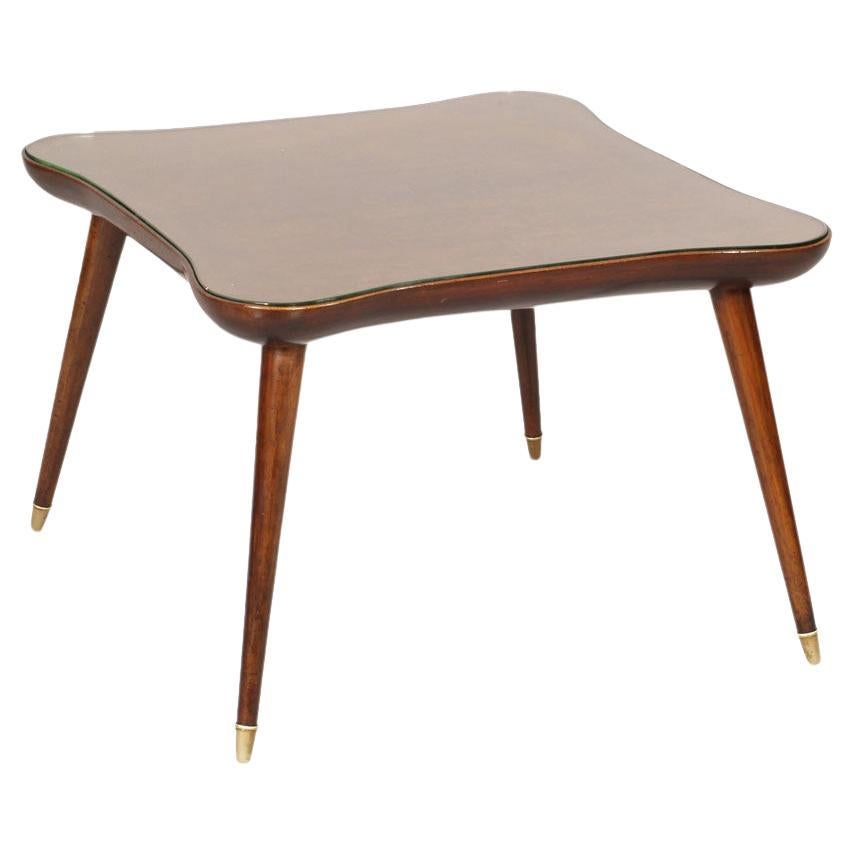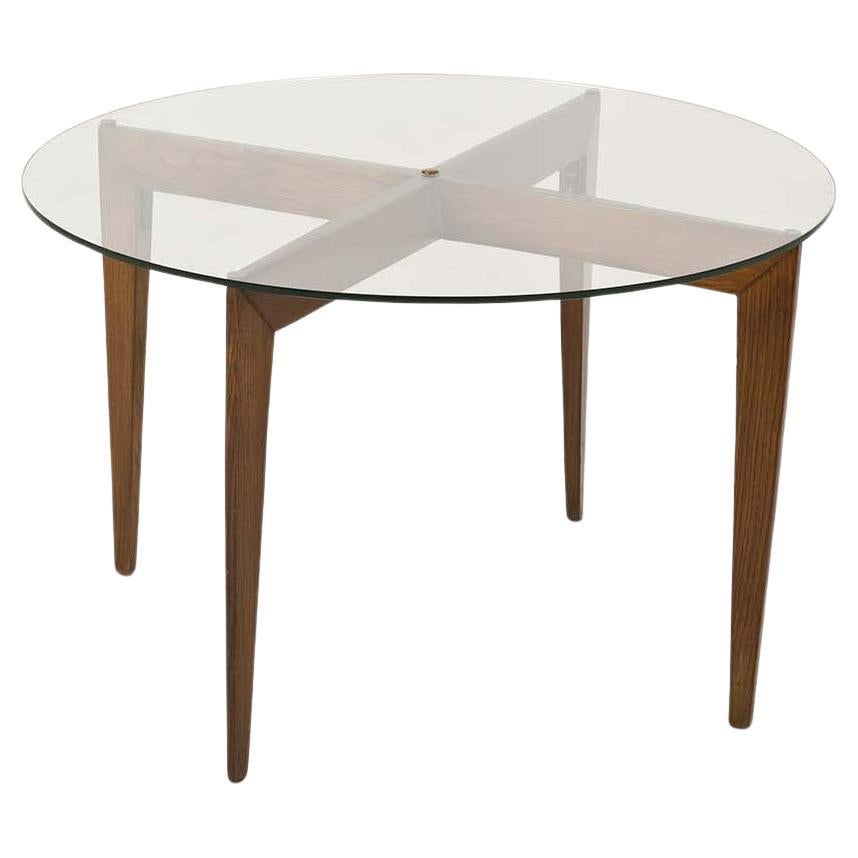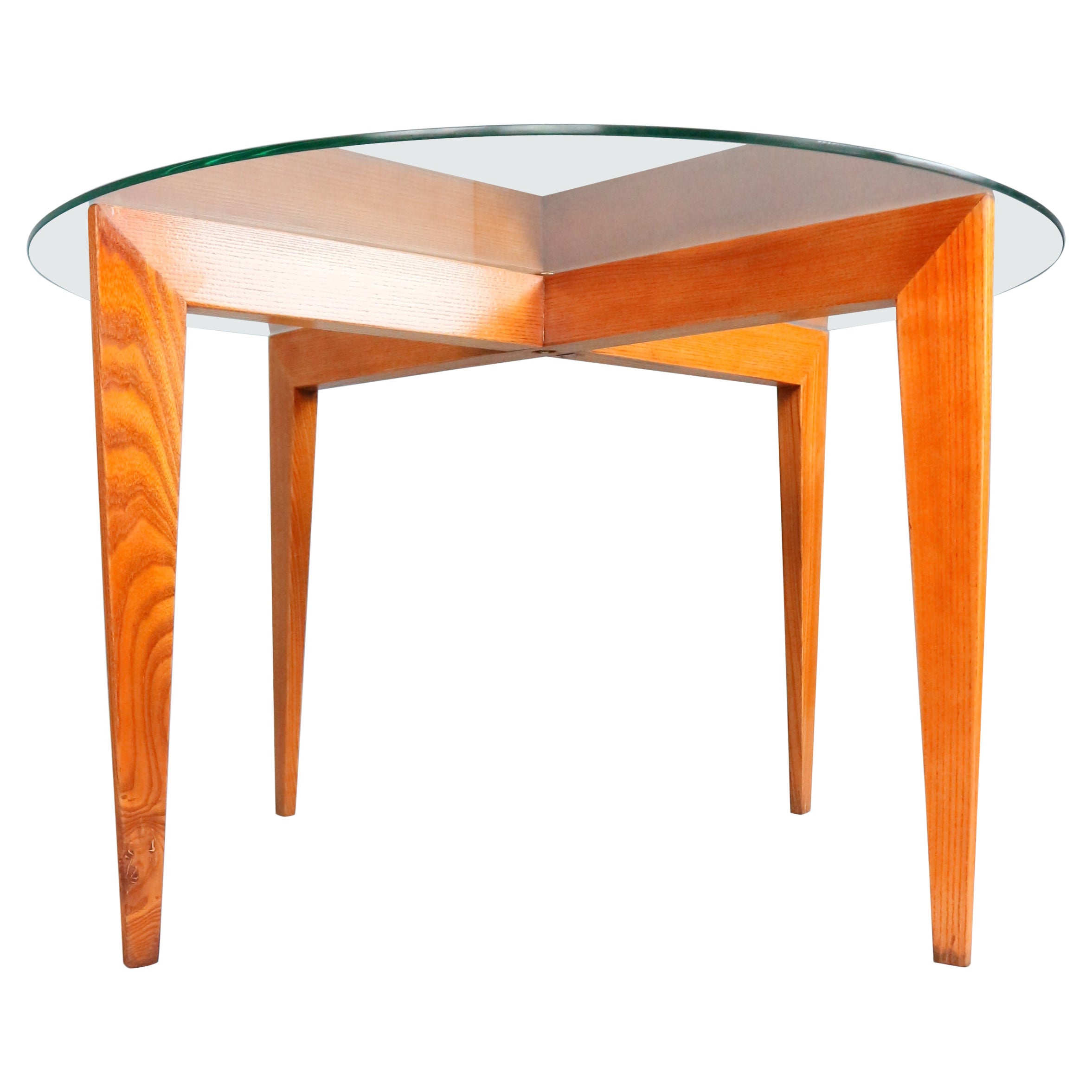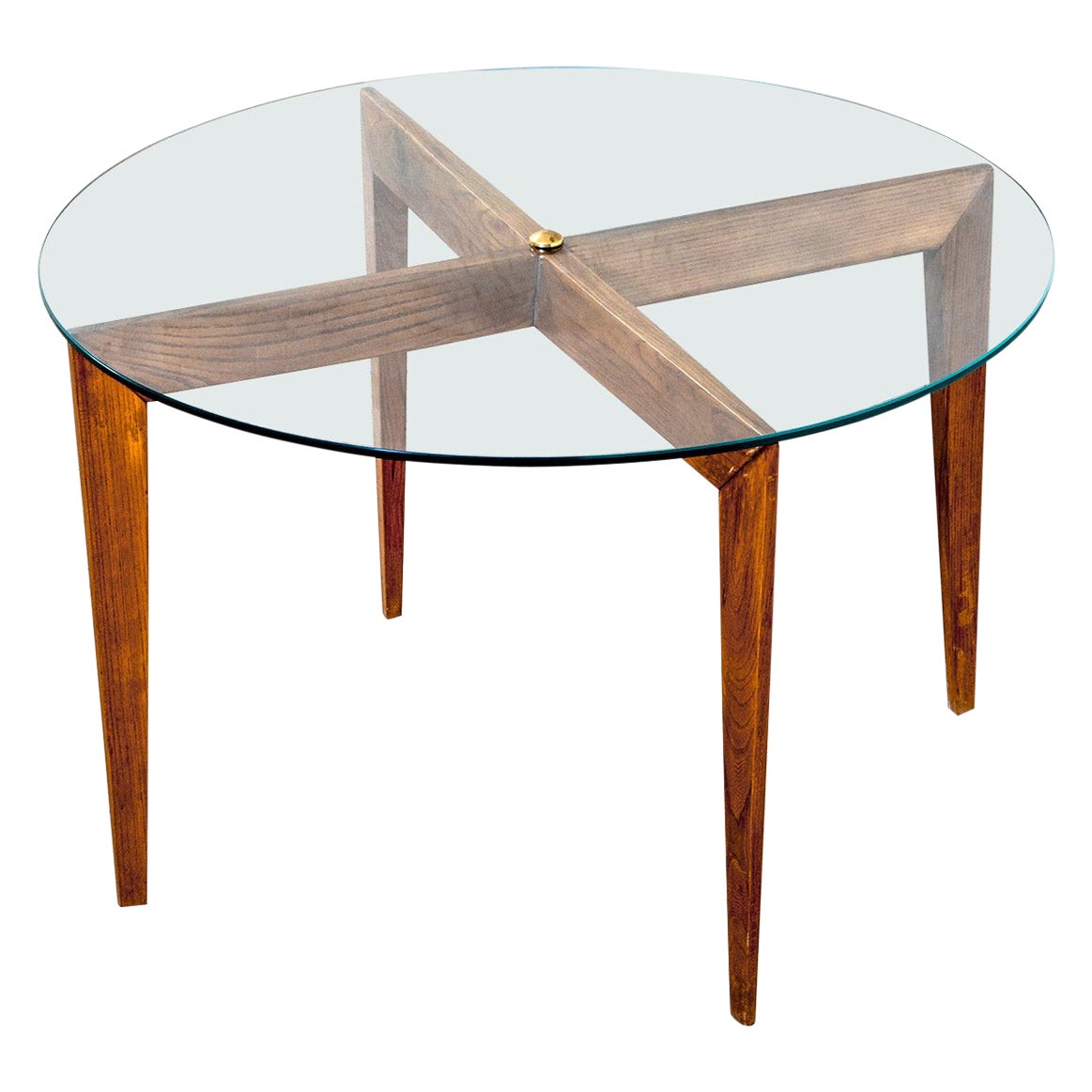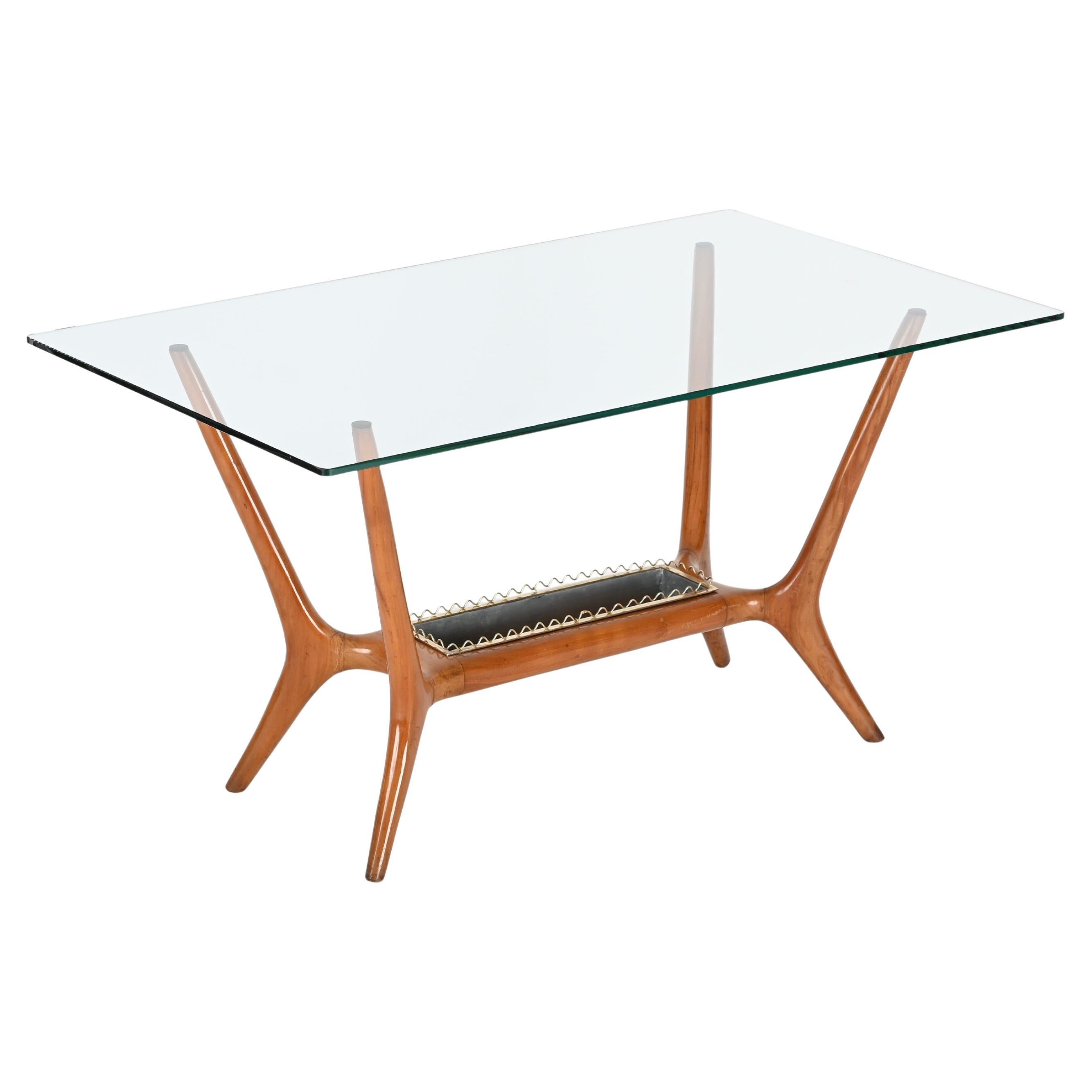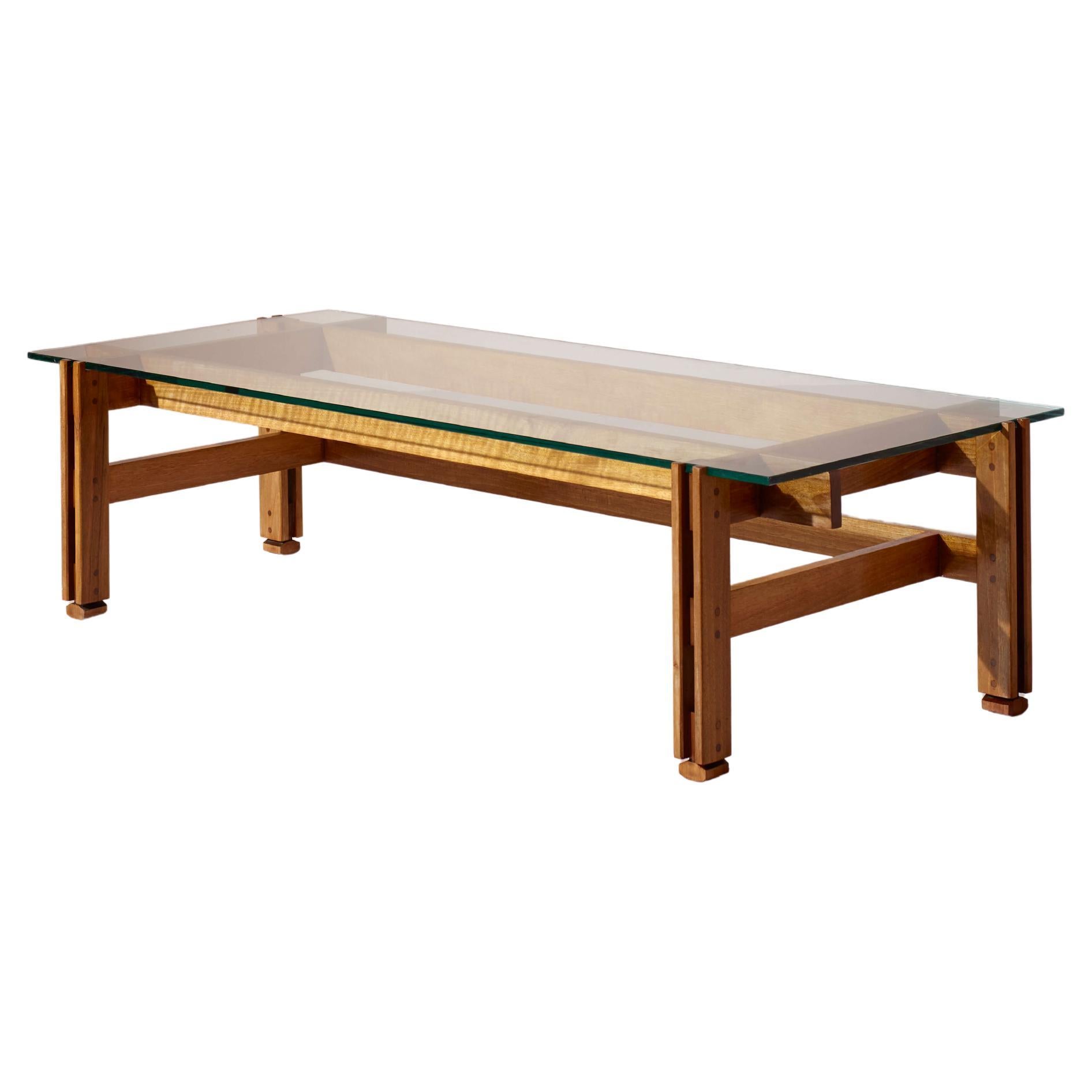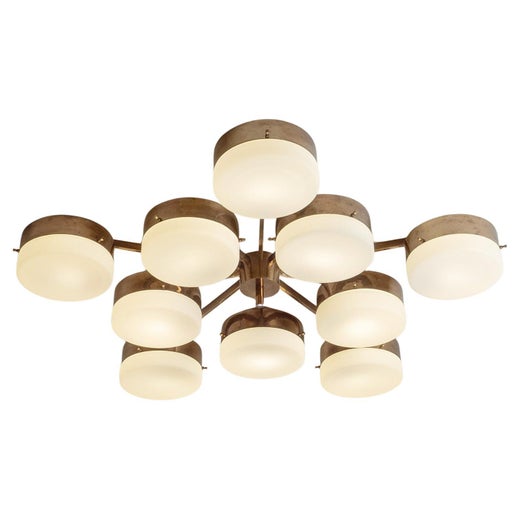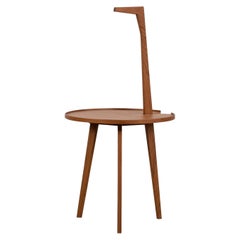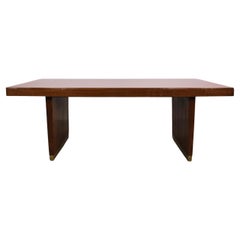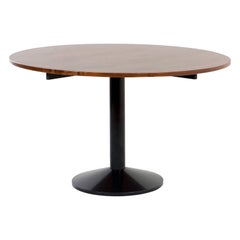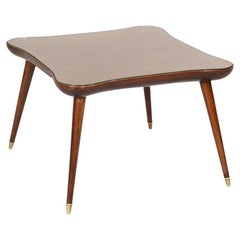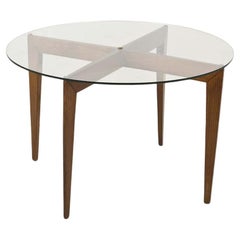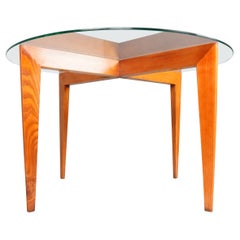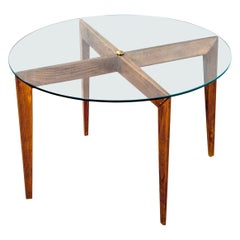Gio Ponti Occasional Table in Wood and Glass by Figli di Amedeo Cassina 1950s
About the Item
- Creator:Figli di Amadeo Cassina (Manufacturer),Gio Ponti (Designer)
- Dimensions:Height: 19.69 in (50 cm)Width: 35.44 in (90 cm)Depth: 17.72 in (45 cm)
- Style:Mid-Century Modern (Of the Period)
- Materials and Techniques:
- Place of Origin:
- Period:
- Date of Manufacture:1950s
- Condition:Wear consistent with age and use.
- Seller Location:Montecatini Terme, IT
- Reference Number:1stDibs: LU5304232392822
Gio Ponti
An architect, furniture and industrial designer and editor, Gio Ponti was arguably the most influential figure in 20th-century Italian modernism.
Ponti designed thousands of furnishings and products — from cabinets, mirrors and chairs to ceramics and coffeemakers — and his buildings, including the brawny Pirelli Tower (1956) in his native Milan, and the castle-like Denver Art Museum (1971), were erected in 14 countries. Through Domus, the magazine he founded in 1928, Ponti brought attention to virtually every significant movement and creator in the spheres of modern art and design.
The questing intelligence Ponti brought to Domus is reflected in his work: as protean as he was prolific, Ponti’s style can’t be pegged to a specific genre.
In the 1920s, as artistic director for the Tuscan porcelain maker Richard Ginori, he fused old and new; his ceramic forms were modern, but decorated with motifs from Roman antiquity. In pre-war Italy, modernist design was encouraged, and after the conflict, Ponti — along with designers such as Carlo Mollino, Franco Albini, Marco Zanuso — found a receptive audience for their novel, idiosyncratic work. Ponti’s typical furniture forms from the period, such as the wedge-shaped Distex chair, are simple, gently angular, and colorful; equally elegant and functional. In the 1960s and ’70s, Ponti’s style evolved again as he explored biomorphic shapes, and embraced the expressive, experimental designs of Ettore Sottsass Jr., Joe Colombo and others.
Ponti's signature furniture piece — the one by which he is represented in the collections of the Museum of Modern Art in New York, Germany’s Vitra Design Museum and elsewhere — is the sleek Superleggera chair, produced by Cassina starting in 1957. (The name translates as “superlightweight” — advertisements featured a model lifting it with one finger.)
Ponti had a playful side, best shown in a collaboration he began in the late 1940s with the graphic artist Piero Fornasetti. Ponti furnishings were decorated with bright finishes and Fornasetti's whimsical lithographic transfer prints of things such as butterflies, birds or flowers; the Montreal Museum of Fine Arts possesses a 1950 secretary from their Architetturra series, which feature case pieces covered in images of building interiors and facades. The grandest project Ponti and Fornasetti undertook, however, lies on the floor of the Atlantic Ocean: the interiors of the luxury liner Andrea Doria, which sank in 1956.
Widely praised retrospectives at the Queens Museum of Art in 2001 and at the Design Museum London in 2002 sparked a renewed interest in Ponti among modern design aficionados. (Marco Romanelli’s monograph, which was written for the London show, offers a fine overview of Ponti’s work.) Today, a wide array of Ponti’s designs are snapped up by savvy collectors who want to give their homes a touch of Italian panache and effortless chic.
Find a range of vintage Gio Ponti desks, dining chairs, coffee tables and other furniture on 1stDibs.
- ShippingRetrieving quote...Shipping from: Borgo a Buggiano, Italy
- Return Policy
More From This Seller
View AllVintage 1970s Italian Mid-Century Modern Coffee and Cocktail Tables
Teak
Vintage 1950s Italian Mid-Century Modern Tables
Brass
Vintage 1950s Italian Mid-Century Modern Desks and Writing Tables
Glass, Wood
Vintage 1950s Italian Mid-Century Modern Tables
Metal
Vintage 1970s Italian Mid-Century Modern Console Tables
Glass, Wood
Vintage 1960s Italian Mid-Century Modern Dining Room Tables
Metal
You May Also Like
Vintage 1940s Italian Mid-Century Modern Coffee and Cocktail Tables
Crystal, Brass
Mid-20th Century Italian Mid-Century Modern Coffee and Cocktail Tables
Oak
Mid-20th Century Italian Mid-Century Modern Coffee and Cocktail Tables
Brass
Vintage 1950s Italian Mid-Century Modern Coffee and Cocktail Tables
Glass, Wood
Vintage 1950s Italian Mid-Century Modern Coffee and Cocktail Tables
Crystal, Metal, Brass
Vintage 1960s Italian Mid-Century Modern Side Tables
Glass, Wood
Read More
Billy Cotton Layers His Interiors with Lived-In Comfort
The Brooklyn-based designer is adept at styles ranging from austere to over-the-top, espousing an architectural, detail-oriented approach also evident in his line of furniture and lighting.
Italian Design Legend Giò Ponti Makes a Splash in Paris
A blockbuster exhibition at the Musée des Arts Décoratifs shows the work of the modernist master in a brilliant new light.
